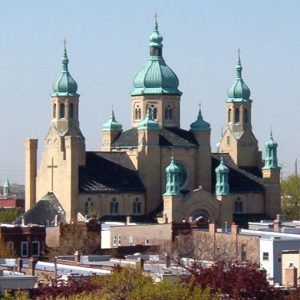 As many will remember, before the Winter feasts I was sharing information about the development of the major feasts of our Church. As I shared, the Nativity was introduced into the East from Rome around 385 CE. Around this same time in the East, the meaning of the Epiphany began to shift from Christ’s birth to His baptism, thereby emphasizing the divine or theophanic character of this feast over its earlier more human aspect. The Nativity, which falls only twelve days previous, formed a fitting Eastern complement to the Epiphany by emphasizing the human nature of Christ through the celebration of His birth.
As many will remember, before the Winter feasts I was sharing information about the development of the major feasts of our Church. As I shared, the Nativity was introduced into the East from Rome around 385 CE. Around this same time in the East, the meaning of the Epiphany began to shift from Christ’s birth to His baptism, thereby emphasizing the divine or theophanic character of this feast over its earlier more human aspect. The Nativity, which falls only twelve days previous, formed a fitting Eastern complement to the Epiphany by emphasizing the human nature of Christ through the celebration of His birth.
Like the Ascension, the Epiphany was observed locally in some churches before the introduction of the Nativity. The Epiphany’s connotations as a birth feast lingered, as Jerome’s homilies indicate, so this probably accounts for the later adoption of the Nativity at Alexandria (circa 430) and at Jerusalem slightly later than at Alexandria. It is also probable that the Council of Ephesus (431) and the Formulary of 433 – an attempted compromise between the true Church and Nestorian views on the nature of Christ – encouraged the acceptance of the Nativity in these cities.
So, these first feasts of Our Lord took years – centuries – to develop and their introduction seems to have been deeply connected to the Church’s growing understanding of Who Jesus Is. As Councils anathematized various persons for presenting incorrect ideas about Who Jesus Is, these feasts also came into existence. As I have shared, originally those events in the life of Jesus that the Church came to see as revealing the very nature of God – “theophanic” events – feasts began to emerge. They came into existence to proclaim the Church’s ideas about Jesus that were formulated by various Councils.
As the Church formulated what She believes about Jesus, She also thought about who Mary the Virgin was and is. Again, feasts began to emerge in honor of Mary because the Church began to solidify Her ideas about Mary. It was at the Council of Ephesus (431) that Mary was declared to the Theotokos, the Mother of God, because Jesus was/is the God-Man.
Each of the next three feasts to be universally established was to a greater or lesser degree concerned with the Virgin Mary. It is interesting that the first feast makes a very mild statement on the Virgin’s role in the history of salvation, the second a somewhat stronger one, and the third stronger still. (More to come about the Marian feasts)
